Western Japan experienced torrential rains in the summer of 2018. After three days of continuous rainfall, the rain intensified. The Oda River, which runs through western Okayama Prefecture, rose to an unprecedented level, its muddy waters raging wildly. The uncanny fear I felt is still vividly etched in my memory. This summer saw a series of natural disasters in various regions. With this in mind, let us think about the nature of inclusive disaster prevention.
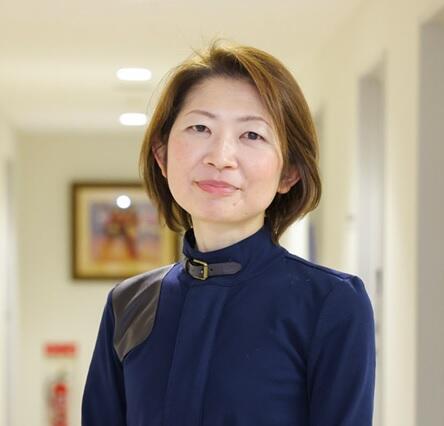
The key is to "identify what is happening as soon as possible."
Japan is a disaster-prone country. Statistics released by the Ministry of Land, Infrastructure, Transport and Tourism in 2023 show that Japan has 8.3% of the world's active volcanoes and 16.9% of earthquakes of magnitude 6 or greater. In addition, about 75% of the country is mountainous, and annual precipitation is well above the world average. Thus, with steep terrain and large amounts of rainfall, Japan is prone to landslides. Natural disasters, large and small, are a common occurrence and never end. They always involve disappearances and deaths.
What, then, is the most important thing in a disaster or emergency situation? I think the answer to this question is simple: "Identify what is happening as soon as possible."
Of course, we have a million things to think about when disasters and emergencies strike. For example, how should we properly escape from the disaster situation? How should we maintain our physical and mental health after the event? First, however, we need to identify the danger as soon as possible, ensure our safety and take prompt and appropriate initial action. This greatly reduces the likelihood of life-threatening dangers and secondary disasters.
Hearing-impaired tend to be information vulnerable
What are the most effective methods for quickly identifying danger? There are some hazards, such as earthquakes, that we can feel by ourselves. However, in most cases, we are warned by sirens, alarms or emails from the local government. Recent developments in information and communications technology have played an important role. Now, it is possible to acquire real-time information as the weather and disaster situations change.
Nevertheless, certain "information-vulnerable" individuals exist. They are more likely to be exposed to danger due to lateness in recognizing the danger. These include children and older adults who do not have communication devices, people living in non-urban areas and people with physical disabilities. The hearing-impaired, including the deaf and hard-of-hearing, particularly tend to be information vulnerable. They cannot hear disaster sirens, alerts and broadcasts, which are the most common ways of broadcasting emergency information to the public.
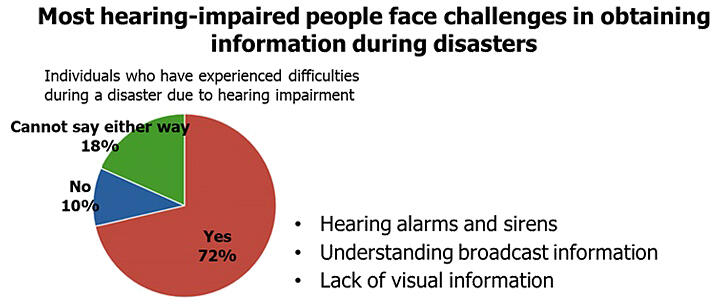
There have been numerous reports of life-threatening situations involving hearing-impaired individuals. Back in 1950, a fire broke out at night in the dormitory of Okayama Prefectural School for the Blind and the Deaf. The dormitory housed approximately 130 students, of whom 16 died in the fire. All 16 children belonged to the School for the Deaf. This tragedy is what motivates my work as an ear, nose and throat doctor in Okayama Prefecture.
The Great East Japan Earthquake struck northern Japan in 2011. The number of deaths in Iwate, Miyagi and Fukushima prefectures was 0.78% of the total population. The death rate was higher for disabled individuals than for abled ones. By disability type, hearing-impaired individuals had the highest death rate at 1.96%, which was more than twice the average death rate. In particular, the coastal town of Onagawa, Miyagi Prefecture, reported a mortality rate of 15% among hearing-impaired individuals.
In other words, in disasters such as fires, floods and tsunamis, where danger cannot be recognized through the somatic senses, obtaining emergency information is an essential task for the hearing-impaired that directly affects their safety.
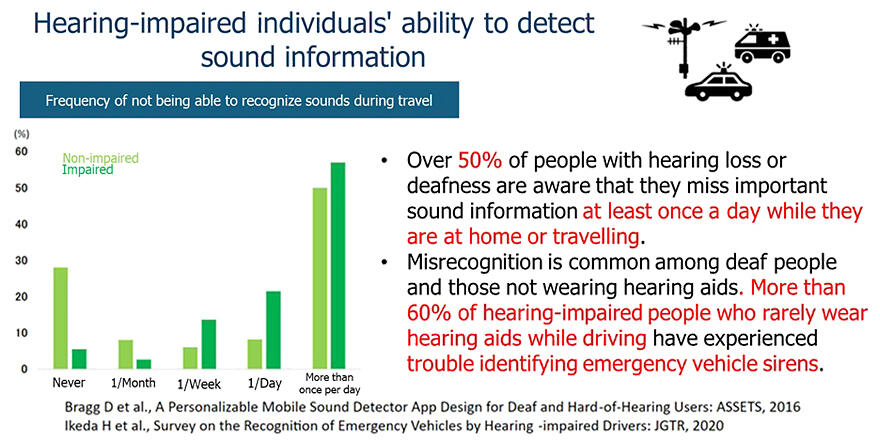
Promoting rapid sound recognition: Development of an "app to convert sound into vibration"
To address these issues, the Hearing Health Center at Okayama University Hospital is working on a project in partnership with corporations and with support from the Japan Agency for Medical Research and Development (AMED). I would like to introduce the development of an app that converts sound into vibration. The idea is to promote "rapid sound recognition" during emergencies.
The app is being developed jointly with Fujitsu and tdi (Shinjuku City, Tokyo Prefecture). It uses a smartwatch mic to detect the sound of ambulance sirens and disaster-prevention radio signals. It then notifies users via vibration and on-screen display of a message. Sounds such as sirens are collected as digital data and converted into numerical data, which are then subjected to machine-learning. The system automatically extracts hidden features of numerical values and repeatedly learns them. It is then able to detect when sounds with the same features are heard.
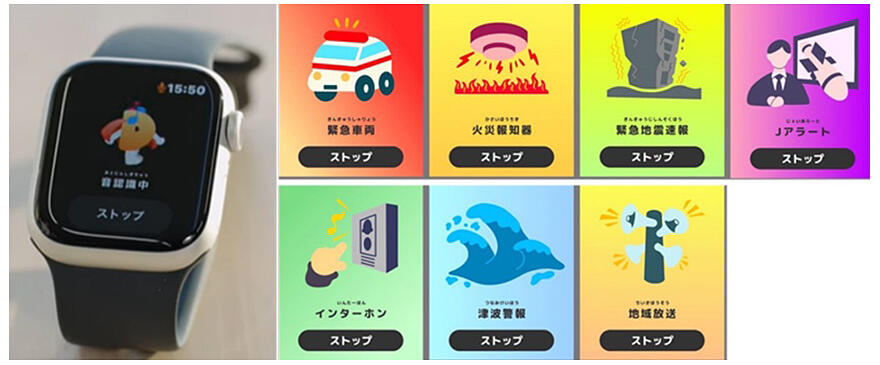
This task may seem straightforward, but identifying only the important sounds from the many noises in everyday life is a challenge. For example, "recognizing emergency vehicle sirens while driving with windows closed and the air conditioner on" is the situation that the intended users frequently encounter. They need help in this situation than in any other situations, but affording such help is in fact an extremely difficult task. Therefore, the system was trained to distinguish between noises and sirens, etc. and repeatedly detect important sounds while noises of various types and volumes were being loaded. After further testing in the city, development finally reached the stage where the app can be provided to intended users.
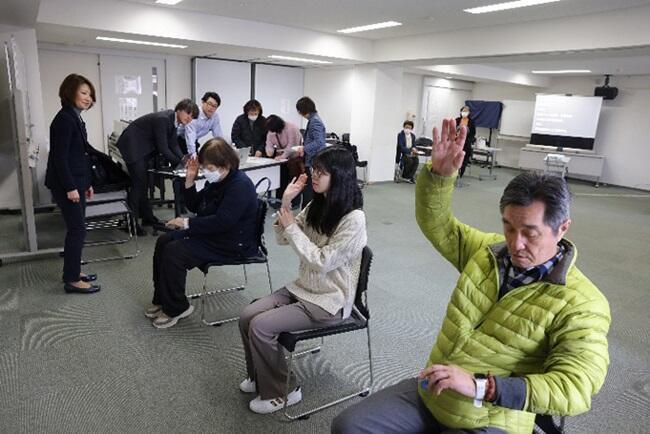
(in Okayama City)
Although tools such as this app can help with rapid sound recognition, they cannot solve everything. Rather than over-relying on technology, it is important to raise each person's awareness of disaster prevention. With this in mind, the project also includes members who work in special-needs education. Doctors, engineers, educators and other professionals are working together to realize a society in which "no one is left behind" in a disaster. We want to continue R&D to improve safety and security in everyday life in an inclusive manner. This means including the hearing impaired, the information-vulnerable, as well as hearing people.
Disaster prevention using apps for everyone, regardless of disability status
Finally, a disaster can occur anytime in the future, even tomorrow. In preparation for it, I would like to broaden the discussion beyond hearing impairment. I recommend using existing disaster prevention apps as a means for acquiring non-sound information, such as forecast of sudden weather changes and obtaining disaster information. They are distributed free of charge by various organizations such as local governments and the national broadcaster NHK. For example, the "Yahoo! Disaster Prevention Alert" app automatically provides information relevant to users' three pre-registered location as well as current location via GPS. If this app is paired with a smartwatch, vibration sensing is also possible.
The app provides alerts on major disasters such as landslides, floods and earthquakes. It also provides information on sudden torrential rains that have been occurring in recent years. In the case of weather warnings, the smartwatch will notify you as early as several hours in advance. For earthquakes, if there is some distance between the epicenter and your current location, the smartwatch will notify you before the tremors hit. The need to control behavior by obtaining such up-to-date predictive information is not limited to the hearing-impaired. There are more dangers in our daily lives than we can imagine, such as people falling off their bicycles during sudden downpours or cars being stranded because of heavy snow.
September 1 is Disaster Prevention Day. We hope that this will be an opportunity for people (regardless of disability) to increase their disaster prevention awareness by installing a disaster prevention app.
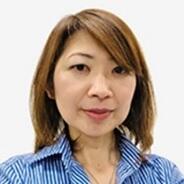
Profile
Yuko Kataoka
Associate Professor, Hearing Health Center, Okayama University Hospital
Graduated from Okayama University Medical School in 1998. Is an Ear, nose and throat doctor.
She has been in her current position since 2023. Her goal is to create a society in which people of all ages, from children to adults to older adults, can play an active role. In pursuit of this goal, she has been seeking collaboration among many professions to address the limitations in medical care for hearing-impaired children and people for the sake of enhancing education, development, and welfare. In a research project under the AMED from FY2022 to 2024, she has been developing equipment for sending and receiving information during emergencies and disasters. For education, Kataoka's project was selected as a finalist for the Zero Project Award 2024, an international award for disability rights sponsored by the Essl Foundation (Austria). Kataoka is widely publicizing her activities. She also serves as the Vice Chair of the UNESCO Chair at Okayama University, Deputy Director of the Organization for Diversity Management Okayama University and Vice Director of the Okayama University Hospital Center for Diversity and Inclusion.
(Yuko Kataoka / Associate Professor, Hearing Health Center, Okayama University Hospital)
Original article was provided by the Science Portal and has been translated by Science Japan.




